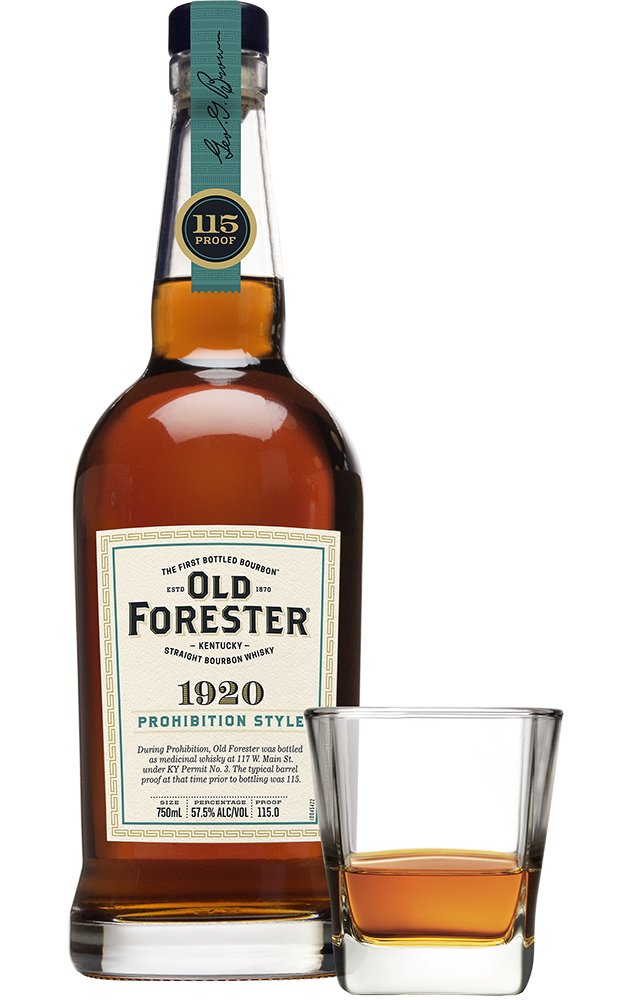Whiskey Tasting: Old Forester 1920 Prohibition Style Bourbon
The penultimate whiskey from my previous tasting was picked because I knew I could rely on it being a classic style bourbon in a way that I knew W.L. Weller would be a classic wheated bourbon. I went with the 1920 Prohibition expression to mix it up a little. I'm sitting here with the candied cherry small wafting at me from a glass several feet away, and it reminds me that it was the right choice for that kind of old school gut-punch whiskey I was hoping it would be.
Whiskey Tasting: Old Forester 1920 Prohibition Style Bourbon
The distillery
I think this blurb from the Old Forester website is an excellent intro to Old Forester:
The Volstead Act of 1920 which initiated Prohibition in the USA granted permits to six distillers in Kentucky to continue to bottle bourbon for medicinal purposes. Through one of these permits, Old Forester continued to be produced as medicinal whiskey on Louisville’s famed Whiskey Row. It is the only bourbon continuously sold by the same company that has been available for sale before, during and after Prohibition.
Old Forester is part of the Brown-Forman spirits conglomerate, along with Jack Daniel's and Woodford Reserve. The "Brown" in Brown-Forman is George Garvin Brown, pharmaceutical salesman turned bourbon producer, and founder of Brown-Forman and Old Forester. Brown-Forman began selling Old Forester bourbon in 1870 as the first whiskey sold exclusively in sealed glass bottles. The name and pedigree is up there with Jack Daniel's.
Old Forester Distillery currently produces whiskey under Master Distiller Chris Morris.
The whiskey

The 1920 Prohibition Style expression of old forester pays homage to the style of whiskey that might have been produced during prohibition for "medicinal" use, including a high proof and punchy recipe. We don't have a specific mash bill but this bourbon is bottled at fairly hot 115 proof. Old Forester gives some notes for us:
Aroma:
An intense medley of cherry preserves, drippy caramel, dark chocolate, thickened maple syrup and seasoned oak spiciness.
Taste:
Dark caramel coats layers of malt nuttiness and sweet graham cracker all warmed by green peppercorn and coriander spice brightened with a hint of cedar.
and Finish:
Tart apple crispness gives way to a long smoky finish full of toasted marshmallow, chocolate and graham cracker sweetness.
I already mentioned I can smell candied cherries without even try to nose this whiskey, so let's dive in.
Look
This is an extremely dark whiskey, the cherry fumes lend well to the burgundy tinting of almost ruby-like whiskey. Despite that it's clear with rose-gold highlights and clingy glycerine that refuses to run for a solid 2-3 minutes.
Nose
Candied cherries lead the charge, with orange close behind. Caramel and oak follow with peppery-and-grassy rye hanging out in the very end.
Taste
This starts with caramel and cherries up front and then quickly becomes quite harsh with the high proof. The alcohol really opens up and brings peppery rye and cinnamon. There's a little maple syrup and vanilla in the middle but it's hard to grasp. This is a real palate destroyer in its undiluted state.
After water
The nose it's still very heavy with cherry after dilution, but we start getting more grassy rye, some toasted grains, maple mixed with the caramel. It's much easier to nose as well, without all the alcohol welling up, but that also means the orange is basically missing now.
This is a whole different beast after a lot of dilutions. It now leads with caramel, maple syrup, and vanilla and then opens up into cinnamon and rye spice, which is still quite hot, where our cherries show up one again at the peak of our alcohol bloom.
The finish fades out into cinnamon and toasted grains with a little sugary sweetness hiding out. It goes on forever and ultimately dries out to apples and vanilla with just a little bit of cinnamon still hanging out.
This is one of those cases where the tasting notes are largely accurate, but kind of overly specific. The basic flavor combination hint at the more complex things the marketing copy wants to tell you is there. Of course, there's no wrong way to describe how something tastes, we're all just trying to come up with words that help share the experience based on similarities.
Summary
I really like this bourbon, but it was a fairly unpopular one at the tasting, and I can understand why. It's kind of hard to drink in the undiluted state and the amount you have to water it down feels like "too much" water. Once you get it to a normal alcohol level, 35-40%, it becomes a fairly complex and interesting bourbon. It would stand up fantastic in almost any cocktail as well with a good mix of classic bourbon flavors and just a few surprises around the edges.
While this isn't my favorite bourbon of the group, I think it's one of the more sophisticated bourbon and gives a lot if you're willing to work at finding the right dilution and give it the time it deserve to appreciate it. So given those qualifications, I leave it as an exercise to the reader if they want to try it.
The finish is still going minutes later, it's buttery now with hints of that toasted grain still hanging out. Astonishing in a way.